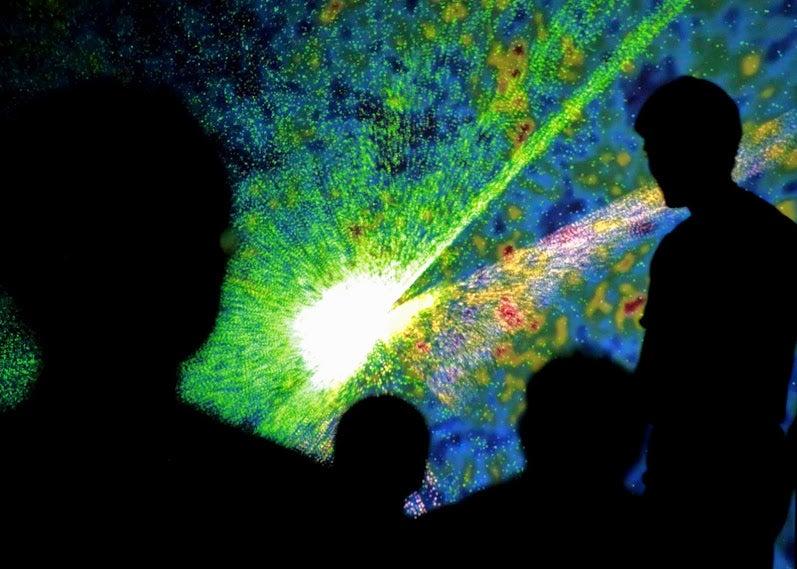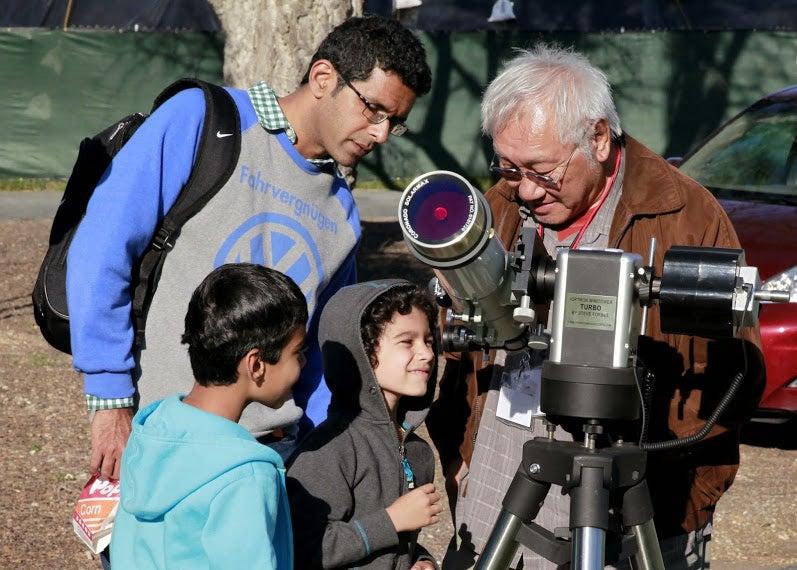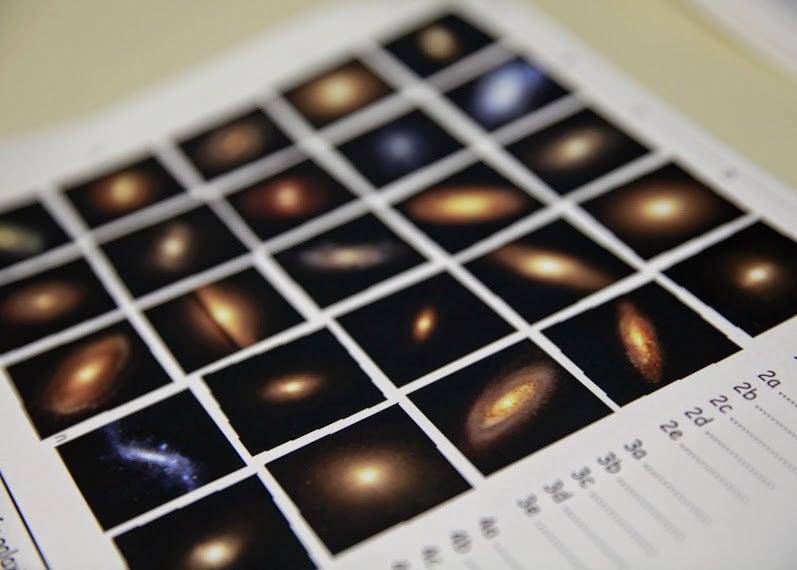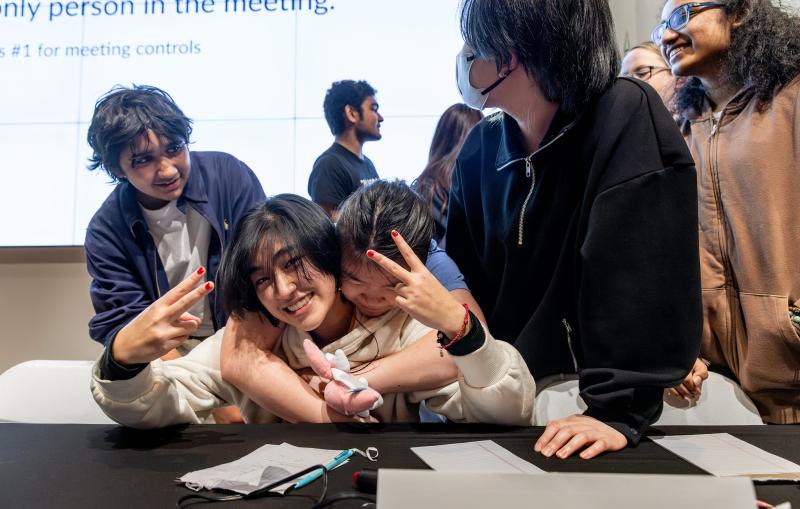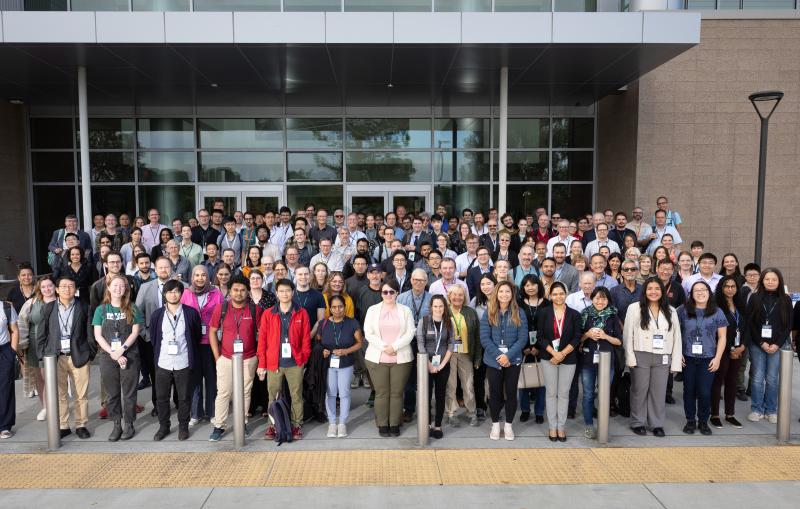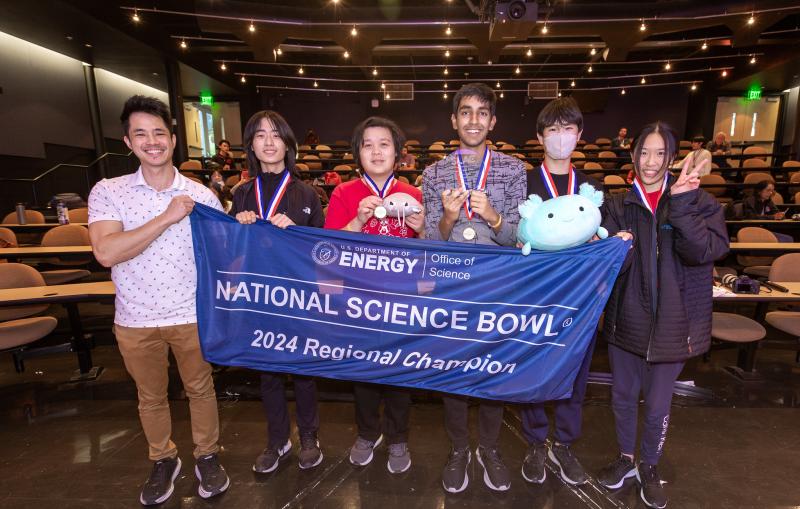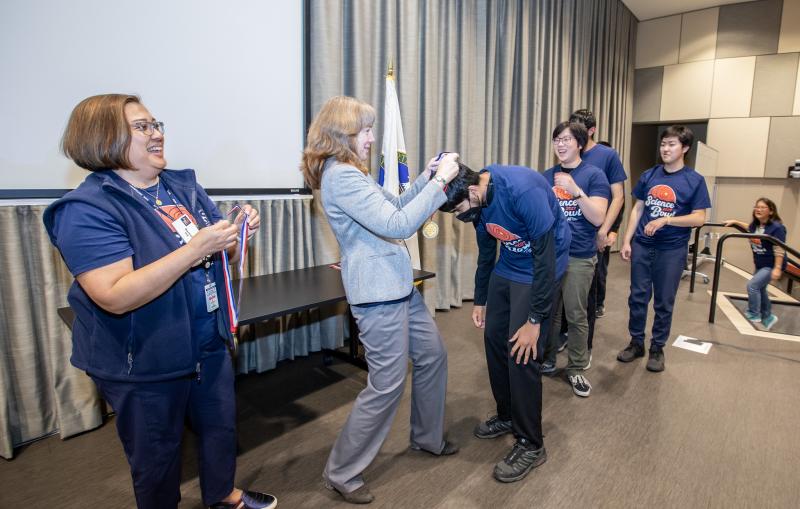KIPAC Celebrates Second Annual Public Open House
About 550 visitors from all over the Bay Area came to explore a wide range of the institute’s cosmic research topics.
By Manuel Gnida
The sky was the limit for the 550 visitors that swarmed SLAC’s Kavli Building into the late evening on May 3. They were attending the second annual Public Open House hosted by the Kavli Institute for Particle Astrophysics and Cosmology (KIPAC) to showcase its cosmic research.
A diverse crowd of all ages poured into offices turned into information booths. There, enthusiastic volunteers awaited them to answer burning questions on topics ranging from the cosmic microwave background and gravitational lenses to "The Physics of Star Trek." A series of engaging talks informed visitors about the latest research on exoplanets, dark energy, black holes, cosmic inflation and gamma-ray astronomy. A lecture on space exploration featured a Lego Mars Rover that was available for close inspection.
KIPAC’s sense of sharing its deep fascination for cosmic science with the public set the tone for the event.
“We study the universe to discover more about the world we were born into,” said KIPAC researcher Norbert Werner, one of the day’s lecturers. “We don’t do this research only for ourselves; it is important to share our knowledge.” Werner, who studies how clusters of galaxies and supermassive black holes influence the structure of the universe, also took part in a panel discussion that gave the audience a glimpse of "Life as an Astrophysicist."
Other attractions included an inflatable planetarium dome that served as the stage for "Dark Universe," a movie also shown at the California Academy of Sciences. KIPAC’s Visualization Lab hosted packed showings of 3-D movies that explained the history of the universe, from the birth of the first stars to the formation of galaxies and clusters of galaxies.
Hands-on activities included the "Galaxy Zoo," which was inspired by a citizen science project of the same name that enlists volunteers to classify galaxies on the Internet. “We teach kids about different types of galaxies and their shapes,” said KIPAC postdoc Becky Canning. “Equipped with this knowledge, kids can go online and do first-hand research themselves.” Other do-it-yourself projects included "MacGyverisms" such as building a spectrometer with not much more than a cardboard box and a CD.
To round out the event, an array of telescopes invited guests to peek at the sun by day and gaze at stars by night. The moon, Saturn and Jupiter were among the cosmic attractions that appeared in all their glory. Two lucky visitors went home with telescopes they won in the event’s raffle. The rest will have another shot next year: Due to the success of the Public Open House, the organizers have decided to make it an annual event.
Contact
For questions or comments, contact the SLAC Office of Communications at communications@slac.stanford.edu.
SLAC is a multi-program laboratory exploring frontier questions in photon science, astrophysics, particle physics and accelerator research. Located in Menlo Park, Calif., SLAC is operated by Stanford University for the U.S. Department of Energy's Office of Science.
DOE’s Office of Science is the single largest supporter of basic research in the physical sciences in the United States, and is working to address some of the most pressing challenges of our time. For more information, please visit science.energy.gov.
